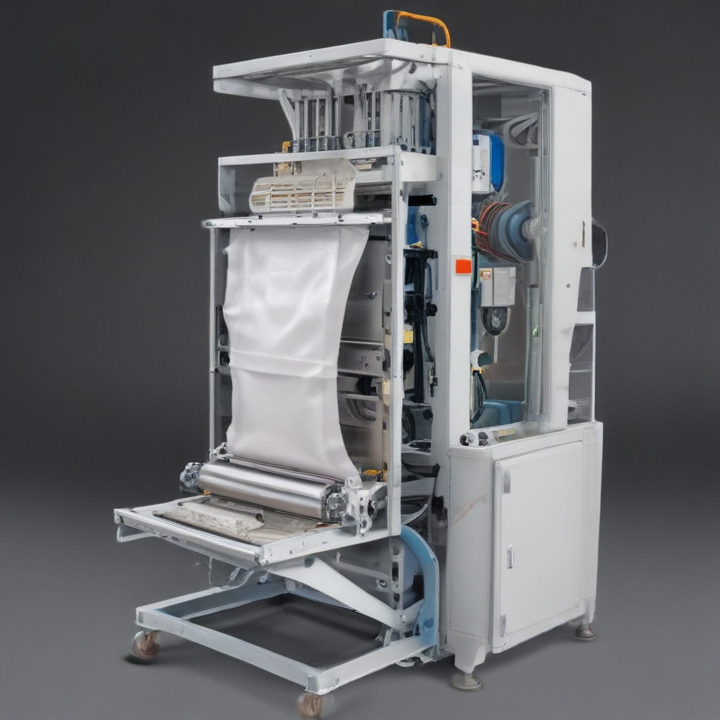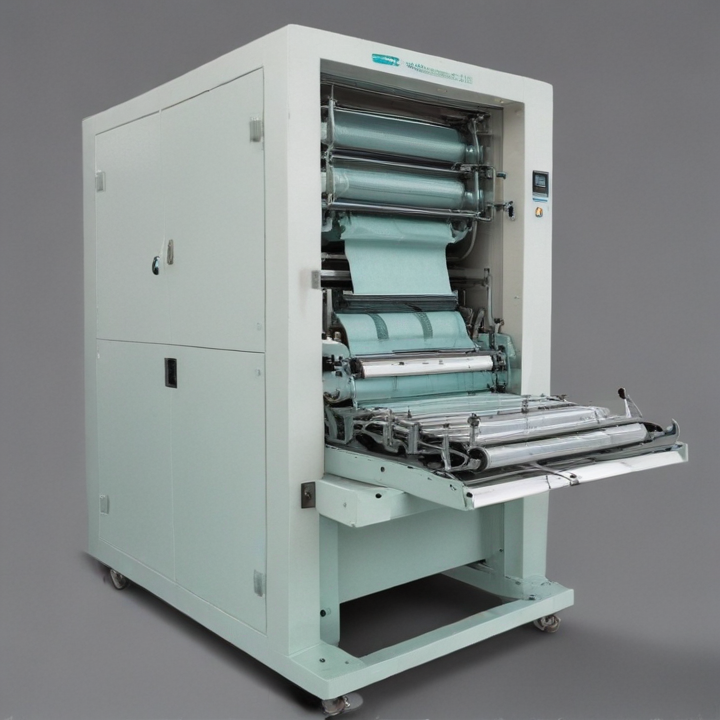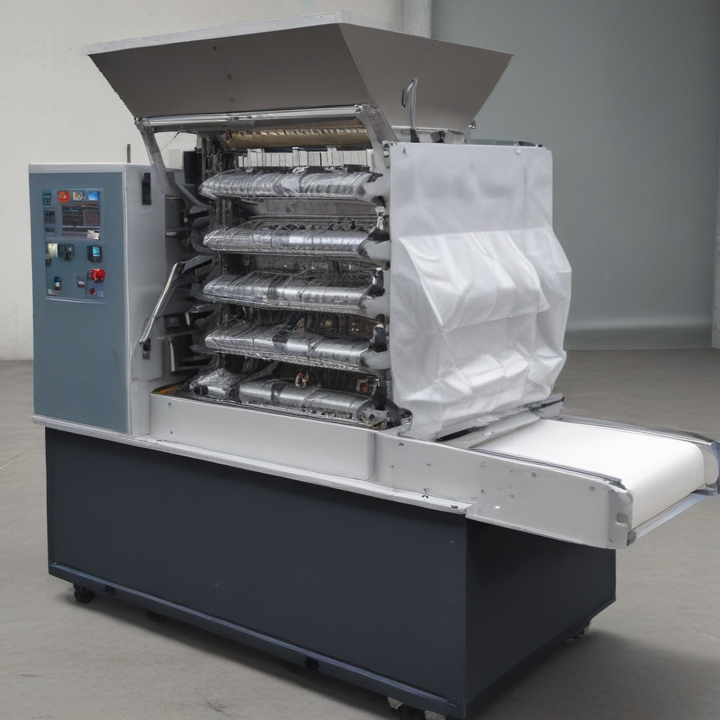List Technical Parameters of “open mouth bagging machine”
An open mouth bagging machine is a specialized packaging equipment used primarily for filling and sealing pre-made open mouth bags with various types of products. Here are the key technical parameters:
1. Bag Size Compatibility:
– Width: Typically 250mm to 650mm.
– Length: Varies based on machine model.
2. Bag Types Supported:
– Paper, plastic, polyethylene, woven polypropylene, burlap.
3. Filling Capacity:
– Generally ranges from 5kg to 50kg per bag.
4. Throughput Rate:
– Varies from 200 to 1200 bags per hour, depending on product type and machine settings.
5. Product Types Handled:
– Granules, powders, pellets, flakes, and irregularly shaped items.
6. Filling Accuracy:
– Typically ±0.2% to ±0.5%, ensuring minimal product wastage.
7. Weighing System:
– Integrated scale system: Load cells or a digital scale for precise measurement.
8. Control System:
– PLC (Programmable Logic Controller) for automated operations.
– HMI (Human Machine Interface) touch screen for user-friendly operation.
9. Sealing Options:
– Heat sealing, sewing, pinch-top, or a combination thereof.
10. Pneumatic and Electrical Requirements:
– Power supply: Usually 220V or 380V, 50/60Hz.
– Compressed air: 6-8 bar pressure for pneumatic operations.
11. Material Feeding Mechanism:
– Gravity feed, screw feed, or belt feed based on product type.
12. Machine Dimensions and Weight:
– Dimensions: Varies with models, typically around 2500mm x 1500mm x 2000mm.
– Weight: Usually between 500kg and 1500kg.
13. Optional Features:
– Dust collection system.
– Product settling and densification options.
– Bag clamping and release mechanisms.
14. Safety Features:
– Emergency stop buttons.
– Protective guarding.
– Overload and error detection systems.
15. Construction Material:
– Stainless steel or high-grade painted steel, especially in contact areas with products.
These parameters ensure that the machine can efficiently, accurately, and safely fill and seal a wide range of products into diverse types of bags.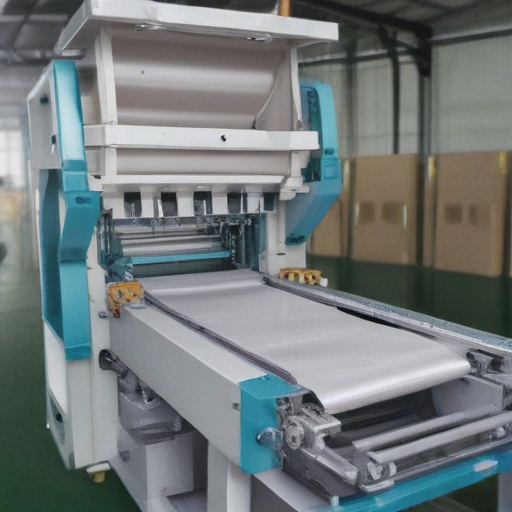
List Product features of “open mouth bagging machine”
1. High Efficiency: Designed for rapid bagging, it can handle multiple bags per minute, increasing throughput and productivity.
2. Versatility: Suitable for a variety of products including grains, chemicals, minerals, and other granular or powdered materials.
3. Adjustable Bag Sizes: Accommodates various bag dimensions, ranging from small to large, to meet different packaging needs.
4. Precision Weighing: Equipped with precise weighing systems to ensure accurate filling, reducing material waste and maintaining product consistency.
5. Automated Operation: Features automated mechanisms for bag placement, filling, and sealing, reducing the need for manual labor and minimizing human error.
6. Sealing Options: Compatible with multiple sealing methods such as sewing, heat sealing, or adhesive sealing, allowing for flexibility based on product type and packaging requirements.
7. User-Friendly Interface: Comes with an intuitive control panel that simplifies operation and allows for easy adjustments to settings.
8. Durable Construction: Made from high-quality materials that can withstand heavy-duty use and harsh industrial environments, ensuring longevity and reliability.
9. Advanced Safety Features: Includes various safety mechanisms such as emergency stop buttons, safety guards, and interlocks to protect operators from accidents.
10. Minimal Maintenance: Designed for easy cleaning and maintenance, with accessible components that can be quickly serviced or replaced.
11. Integration Capability: Can be integrated with other packaging line equipment such as conveyors, palletizers, and wrappers for a seamless packaging process.
12. Energy Efficient: Engineered to consume less energy, reducing operational costs and environmental impact.
13. Customizable Options: Offers customization to meet specific requirements, including different materials, finishes, and additional features based on individual needs.
14. Real-Time Monitoring: Equipped with sensors and software that provide real-time data monitoring and reporting, helping to optimize operation and maintain quality control.
15. Compliance: Meets industry standards and regulations ensuring it is suitable for a wide range of applications.
These comprehensive features make the open mouth bagging machine an essential tool for industrial packaging operations.
List Application of “open mouth bagging machine”
An open mouth bagging machine is a versatile packaging solution widely used across various industries. Here’s an overview of its applications:
1. Agricultural Products:
– Grains and Seeds: Packaging rice, wheat, barley, corn, and other grains.
– Animal Feed: Bagging livestock and pet food efficiently.
– Fertilizers: Packaging both organic and chemical fertilizers.
2. Food Industry:
– Dry Foods: Efficiently bagging flour, sugar, salt, coffee, and spices.
– Snack Foods: Packaging items like chips, nuts, and dried fruits.
3. Chemical Products:
– Powders and Granules: Packaging chemicals including plastic pellets, pigments, and other dry chemicals.
– Fertilizers and Pesticides: Safely bagging agricultural chemicals.
4. Building Materials:
– Cement and Mortar: Bagging fine powders like cement, mortar, and plaster.
– Aggregates: Packaging sand, gravel, limestone chips, and other construction materials.
5. Mining and Minerals:
– Raw Materials: Bagging ore, coal, and other raw materials in mining operations.
6. Industrial Products:
– Powdered Metals: Efficient bagging of powdered metals used in manufacturing.
– Plastics and Resins: Packaging granular and powdered plastic resins.
7. Consumer Goods:
– Household Items: Bagging detergents, pet litter, and other consumer products.
8. Environmental Industry:
– Waste Management: Packaging recycled materials, compost, and other waste products for transport.
In summary, the open mouth bagging machine’s ability to handle a wide range of materials from fine powders to larger granules makes it a valuable asset in agriculture, food production, chemicals, building materials, mining, and consumer goods packaging. Its flexibility, efficiency, and adaptability across these diverse applications underline its critical role in modern industry.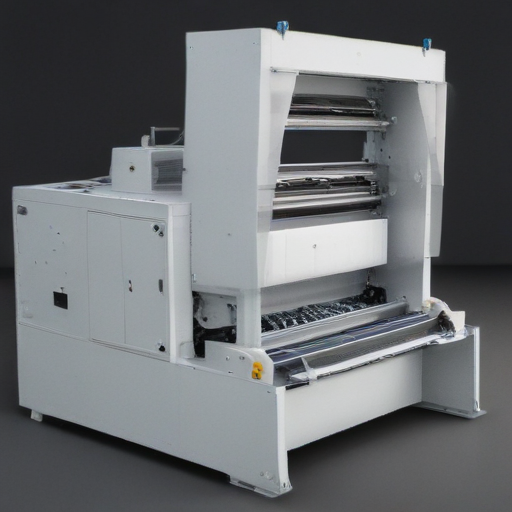
List Various Types of “open mouth bagging machine”
Sure, here’s a brief overview of various types of open mouth bagging machines:
1. Gravity Fed Bagging Machine:
– Uses gravity to fill bags.
– Suitable for free-flowing materials like grains and pellets.
2. Auger Fed Bagging Machine:
– Utilizes an auger screw to move and measure product.
– Ideal for fine powders and granular materials.
3. Net Weigh Bagging Machine:
– Pre-weighs the product in a weigh hopper before discharging into the bag.
– Ensures precise weight accuracy and is good for high-speed applications.
4. Gross Weigh Bagging Machine:
– Weighs the product directly in the bag.
– Beneficial for applications where speed is less critical but cost is a factor.
5. Impeller Fed Bagging Machine:
– Uses spinning impellers to move non-free-flowing materials.
– Perfect for finely powdered, difficult-to-handle substances like cement.
6. Valve Bagging Machine:
– Specifically designed for valve bags, which seal automatically upon filling.
– Commonly used in industries like building materials and chemicals.
7. Bottom-Up Bagging Machine:
– Fills bags from the bottom up, reducing dust and improving fill accuracy.
– Suitable for fine and dusty materials.
8. Open Mouth Bag Placers:
– Automated systems for placing and opening empty bags to be filled.
– Enhances efficiency in high-volume operations.
9. Manual Bagging Machines:
– Requires manual placement and sealing of bags.
– Ideal for small-scale operations and varied products.
10. Form, Fill, and Seal Bagging Machines:
– Creates bags from a roll of film, fills, and seals them.
– Versatile and can be adapted for various products and bag sizes.
Each type of machine is designed to handle specific materials and production requirements, ensuring efficiency and precision in packaging operations.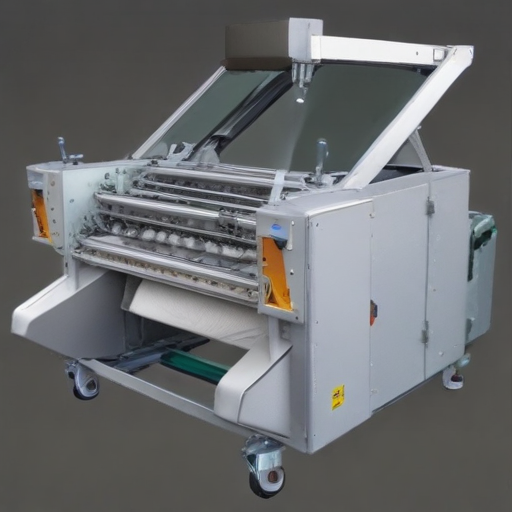
Custom Manufacturing Options for open mouth bagging machine
Custom manufacturing options for open mouth bagging machines cater to a variety of industries by addressing specific needs and requirements. Below are some notable customizations available:
1. Bag Types and Sizes:
– Machines can be designed to handle various bag materials such as paper, plastic, and woven poly.
– Customizable for different bag capacities, ranging from a few kilograms to large industrial sacks.
2. Filling Systems:
– Gravity, auger, or pneumatic filling systems can be chosen based on the type of material being bagged (granular, powder, or bulk solids).
3. Bag Sealing Options:
– Heat sealing, stitching, or glue sealing features can be integrated depending on the material and application.
– Inline bag closing systems to enhance processing speeds.
4. Weighing and Dosing Systems:
– Precision weighing systems can be incorporated for accurate dosing and minimizing product loss.
– Multi-head weighing options for faster throughput in high-volume operations.
5. Conveyor Integration:
– Custom conveyors and transfer systems to seamlessly integrate with existing production lines.
– Adjustable height and tilt options for flexible operation.
6. Automation and Control:
– Advanced PLC (Programmable Logic Controller) systems for exact control and monitoring.
– User-friendly HMIs (Human-Machine Interfaces) for ease of operation.
– Integration with SCADA (Supervisory Control and Data Acquisition) systems for higher-level control and data collection.
7. Material Handling Features:
– Dust control systems to maintain a clean working environment.
– Vibratory tables for product settling to optimize bag filling.
8. Safety and Compliance:
– Customizable safety features including guards, emergency stops, and compliance with international safety standards.
– Options for explosion-proof components in hazardous environments.
These custom options ensure that the open mouth bagging machines meet specific industry needs, optimizing efficiency, accuracy, and safety in the packaging process.
List Quality Control and The Manufacturing Process of “open mouth bagging machine”
Quality Control in Open Mouth Bagging Machine Manufacturing:
1. Raw Material Inspection: Verify the quality and specifications of incoming materials such as metals, electronics, and pneumatic components.
2. Supplier Qualification: Select reliable suppliers and regularly audit their performance to ensure consistent quality.
3. Component Testing: Every part, including the hopper, bag-sealing mechanism, and weighing system, undergoes rigorous testing for durability and precision.
4. In-Process Checks: Continuous inspection throughout the assembly stages ensures adherence to design and performance criteria.
5. Final Product Evaluation: Finished machines are tested for operational efficiency, accuracy of weight dispensation, and safety standards.
6. Documentation and Traceability: Maintain comprehensive records for traceability and compliance with industry regulations.
Manufacturing Process of Open Mouth Bagging Machine:
1. Design & Prototyping: Engineers create detailed designs and prototypes, focusing on functionality, efficiency, and durability.
2. Material Procurement: High-quality raw materials and components are sourced based on design specifications.
3. Cutting and Fabrication: Metal parts are cut, shaped, welded, and assembled. This includes creating frames, hoppers, and feeders.
4. Assembly: Skilled workers assemble different modules such as the filling unit, weighing system, and sealing mechanism.
5. Integration of Electronics: Sensors, control panels, and automation systems are installed and integrated.
6. Software Programming: Control software is developed and programmed into the machine for precise operations.
7. Preliminary Testing: Initial tests are conducted on assemblies to ensure they function correctly before final integration.
8. Final Assembly: All modular components are assembled into the complete machine.
9. Comprehensive Testing: The assembled machine undergoes a series of tests for performance, accuracy, and safety.
10. Calibration: The machine is calibrated to ensure it meets weight accuracy and operational specifications.
11. Quality Assurance: Final inspections and quality assurance tests are performed.
12. Packaging & Shipping: The machine is then carefully packaged and shipped to the customer.
This concise manufacturing and quality control process ensures that open mouth bagging machines are reliable, accurate, and safe for industrial use.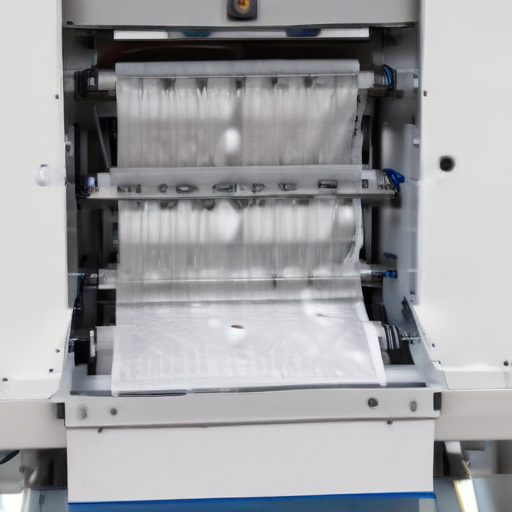
How to use “open mouth bagging machine”
To use an open mouth bagging machine efficiently, follow these steps:
1. Preparation:
– Materials: Ensure you have the right type and size of open mouth bags.
– Machine Check: Inspect the machine for any issues. Ensure it’s clean and all parts are functioning properly.
2. Setting Up:
– Power On: Switch on the machine and let it run initial diagnostics.
– Adjust Settings: Configure the machine for the type and weight of the product you’re using. Input the necessary parameters on the control panel.
3. Loading Product:
– Feeding Hopper: Fill the hopper with the product you intend to bag. Ensure the product is free of clumps or any foreign objects.
4. Bag Placement:
– Open Bag: Manually open the mouth of the bag.
– Positioning: Place the open bag under the filling spout. Depending on the model, you might need to position it on a bag-clamp mechanism that holds it securely.
5. Filling Process:
– Start Fill Cycle: Engage the bagging cycle via the control panel or foot pedal. The machine will dispense the pre-set amount of product into the bag.
– Monitor Fill: Check the filling process for accuracy and consistency.
6. Sealing:
– Release Bag: After filling, manually release the bag or the machine may do it automatically.
– Seal: Use the integrated sealing mechanism (if available) or manually move the bag to a separate sealing machine to close it (e.g., sewing or heat sealing).
7. Quality Check:
– Inspect: Look at the filled and sealed bag to ensure it meets quality standards.
– Adjustments: Make any necessary adjustments on the machine to improve accuracy or efficiency.
8. Finalize and Cleanup:
– Turn Off: Once all bags are filled, turn off the machine.
– Clean: Clean the machine to remove residues and prepare it for the next use.
By following these steps, you will be able to efficiently use an open mouth bagging machine and maintain high-quality output.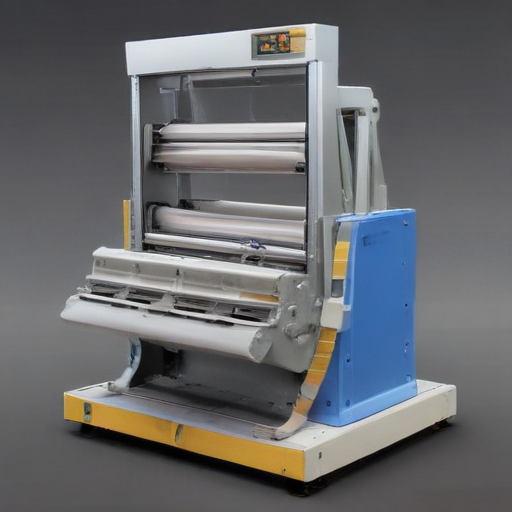
List Properties and Terms of “open mouth bagging machine”
An open mouth bagging machine is designed for efficiently packing and sealing products into open-mouth bags, commonly used in industries like agriculture, food processing, chemicals, and building materials. Here are key properties and terms associated with it:
### Properties
1. Accuracy: High precision in weighing and filling to ensure consistent product amounts.
2. Speed: Varies from manual to fully automated systems, affecting throughput rates.
3. Versatility: Ability to handle different bag types (paper, plastic, woven) and sizes.
4. Ease of Use: User-friendly interfaces and controls for operational efficiency.
5. Durability: Constructed with robust materials to withstand industrial environments.
6. Maintenance: Designed for easy access and simple maintenance to minimize downtime.
7. Safety: Equipped with safety features to protect operators and equipment.
### Terms
1. Feeder: Component that regulates the flow of material into the bag.
2. Weighing System: Measures the precise amount of product to be filled.
3. Clamping Mechanism: Holds the bag securely during filling.
4. Conveyor: Moves filled bags from the filling station to the sealing or shipping area.
5. Bag Magazine: Automated component that dispenses empty bags for filling.
6. Dust Collection: Systems to minimize airborne particles during bag filling.
7. Sealing System: Heat or sewn sealing methods to close the filled bags.
8. PLC (Programmable Logic Controller): Controls the machine’s functions, allowing for customization and automation.
9. HMI (Human-Machine Interface): Displays operational data and allows user interaction with the machine.
10. Auto-Adjust: Feature that adjusts machine settings based on bag size/type.
In summary, open mouth bagging machines are essential for various industries, providing an efficient, accurate, and versatile packaging solution. Key terms like feeder, weighing system, and sealing system denote the core functionalities that contribute to the machine’s operational effectiveness.
List The Evolution history of “open mouth bagging machine”
The evolution of the open mouth bagging machine can be traced back to the early 20th century and reflects the advancement of packaging technology over the decades:
1. Early 1900s: Initial development involved manual bagging processes in industries like agriculture and food production. Workers used rudimentary tools to fill and seal bags, which was labor-intensive and time-consuming.
2. 1930s-1940s: The first semi-automated bagging machines emerged. These early machines allowed for faster and more consistent bagging by automating parts of the filling process but still required significant human intervention.
3. 1950s-1960s: Technological advancements led to the introduction of fully automated systems. Pneumatic and mechanical components were employed to handle the weighing, filling, and sealing of bags, thus improving efficiency and accuracy.
4. 1970s-1980s: Innovations in electronics and computer controls vastly improved the precision and speed of bagging machines. Machines began to incorporate programmable logic controllers (PLCs), making them more versatile and adaptable to different types of products and bag sizes.
5. 1990s: The focus shifted towards enhancing operator safety and reducing manual handling. Ergonomic designs and safety features were integrated, alongside improvements in the automation technology to further increase throughputs.
6. 2000s-Present: Modern open mouth bagging machines are characterized by advanced features such as servo motors, touch-screen interfaces, and internet connectivity. These machines offer high levels of automation, precise weighing, and are capable of handling various materials including grains, chemicals, and construction materials. Features like remote monitoring and diagnostics, energy efficiency, and user-friendly software have become standard.
The evolution of the open mouth bagging machine highlights the march towards greater efficiency, safety, and adaptability, driven by ongoing technological advancements.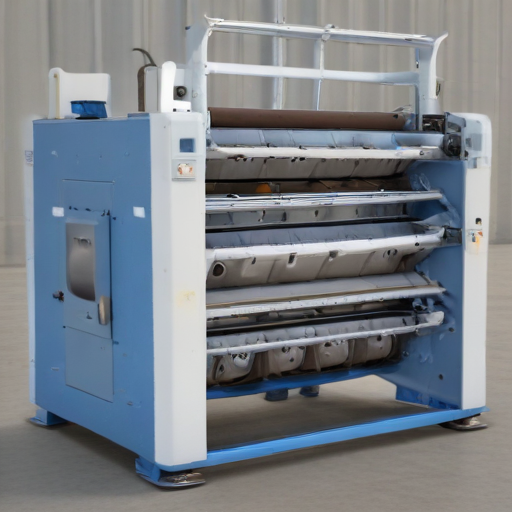
How to Select a Reliable open mouth bagging machine
Selecting a reliable open-mouth bagging machine involves considering several critical factors to ensure the machinery meets your specific operational needs. Here’s a concise guide to help you make an informed decision:
### 1. Capacity and Speed
Evaluate the machine’s capacity to handle your production volume. Check the throughput rate (bags per minute/hour) to ensure it matches your requirements and can handle peak production periods.
### 2. Material Compatibility
Consider the types of materials you will be bagging. Ensure the machine can handle a variety of materials, whether they are granular, powdered, or textured, and can manage different bag types (plastic, paper, poly-woven).
### 3. Automation and Integration
Look for machines with automation features that can integrate seamlessly with your existing systems. Check for compatibility with your existing conveyors, scales, palletizers, and wrapping systems.
### 4. Ease of Use
Opt for machines with user-friendly interfaces and control systems. Training time can be minimized if the machine is intuitive and operator-friendly.
### 5. Durability and Build Quality
Examine the construction quality. Machines should be made from robust, durable materials to withstand the rigors of daily use. Stainless steel construction is often preferred for its longevity and resistance to corrosion.
### 6. Maintenance and Support
Reliable machines should come with strong manufacturer support. Check for the availability of spare parts, ease of maintenance, and the manufacturer’s reputation for customer service. Ensuring local technical support can minimize downtime.
### 7. Safety Features
Ensure the machine includes essential safety features to protect operators from harm. Emergency stop buttons, safety guards, and compliance with industry safety standards are crucial.
### 8. Cost-Effectiveness
While initial cost is a factor, consider the machine’s total cost of ownership. Evaluate energy efficiency, longevity, and potential repair costs. Opting for a slightly more expensive but reliable machine can save money in the long run.
### Summary
To select a reliable open mouth bagging machine, assess its capacity, material compatibility, automation potential, ease of use, build quality, support and maintenance, safety features, and total cost of ownership. Comparing different models and reading user reviews can also provide valuable insights.
List “open mouth bagging machine” FAQ
Open Mouth Bagging Machine FAQ
1. What is an open mouth bagging machine?
– An open mouth bagging machine is equipment used for packaging materials into open mouth bags, typically for grains, seeds, pet food, chemicals, and other bulk materials.
2. How does it work?
– The machine fills pre-made bags by holding them open and accurately dispensing the material inside. It typically includes weighing, filling, and sealing components to ensure precise packaging.
3. What materials can it handle?
– It can package a wide variety of materials, such as powders, granules, pellets, and flakes. Common examples include grains, flour, sugar, cement, and fertilizer.
4. What types of bags can it use?
– It supports various bag types, including paper, plastic, and woven polypropylene bags, ranging from small to large sizes.
5. What are the benefits?
– Benefits include high-speed operation, accuracy, reduced labor costs, and improved packaging consistency and efficiency.
6. Is it easy to operate?
– Yes, modern machines often feature user-friendly interfaces with touch screens for easy operation and control.
7. What maintenance does it require?
– Regular maintenance involves cleaning, checking for wear and tear, and ensuring all components (like the weigh system and sealing units) are functioning correctly. Routine maintenance helps avoid downtime and preserves machine longevity.
8. How accurate is the filling process?
– The machines are designed for high accuracy, often within a few grams, ensuring minimal product waste and consistent package weights.
9. Are there customizable options?
– Yes, these machines can be customized to meet specific requirements, such as different bag sizes, materials, and additional features like automatic palletizing.
10. What industries use open mouth bagging machines?
– They are widely used in agriculture, food processing, chemicals, mining, and building materials industries.
This concise FAQ should help you understand the basic aspects and benefits of open mouth bagging machines without overwhelming details.
Top 10 FAQ with answer about open mouth bagging machine for Buyer Sourcing from China
Sure! Here are the top 10 FAQs, along with concise answers, about sourcing open mouth bagging machines from China:
1. What is an open mouth bagging machine?
– An open mouth bagging machine is used for packaging bulk materials into open-mouth bags, ideal for powders, granules, and pellets.
2. What types of materials can be packaged using these machines?
– They can handle a variety of materials, including grains, pet food, chemicals, fertilizers, and building materials.
3. What are the benefits of sourcing from China?
– China offers competitive pricing, a range of options, and often rapid production timelines due to advanced manufacturing capabilities.
4. How do I ensure the quality of the machine?
– Verify the supplier’s credentials, ask for CE or ISO certifications, review customer feedback, and consider a factory visit or third-party inspection.
5. What is the typical lead time for production and delivery?
– It generally ranges from 4 to 8 weeks, depending on the complexity of the machine and the supplier’s schedule.
6. What should I check during the trial run of the machine?
– Evaluate the machine’s speed, accuracy, ease of operation, and consistency in bagging. Check for any faults or malfunctions.
7. Can the machines be customized?
– Yes, many Chinese suppliers offer customization options for specific needs, including adjustments for bag size, material types, and automation levels.
8. What are the payment terms?
– Common terms include a 30-50% upfront payment, with the balance paid upon completion or before shipment. Letters of Credit (L/C) are also widely accepted.
9. How is the after-sales service?
– Reputable suppliers provide comprehensive after-sales support, including remote assistance, spare parts supply, and sometimes on-site training.
10. What logistical considerations should I be aware of?
– Ensure clear communication about INCOTERMS (typically FOB or CIF), and consider hiring a freight forwarder experienced in handling machinery imports.
By addressing these common questions, buyers can make more informed decisions when sourcing open mouth bagging machines from China.

